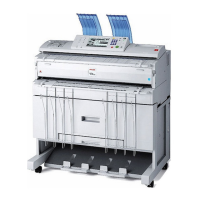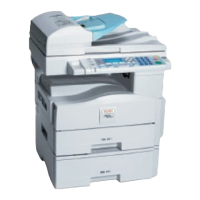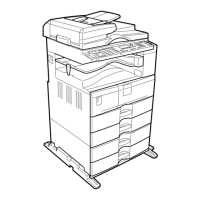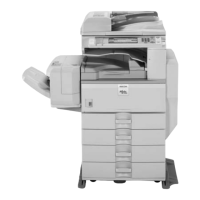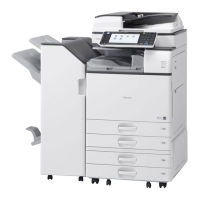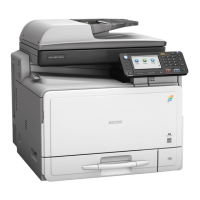Restrict Use of Destinations
This can be specified by the user administrator.
The available scanner destinations are limited to the destinations registered in the Address Book.
A user cannot directly enter the destinations for transmission.
If you specify the setting to receive e-mails via SMTP, you cannot use [Restrict Use of Destinations].
The destinations searched by “Search LDAP” can be used.
For details about preventing unauthorized transmission, see “Preventing Data Leaks Due to
Unauthorized Transmission”.
• On
• Off
Restrict Adding of User Destinations
This can be specified by the user administrator.
When “Restrict Use of Destinations” is set to [Off], after entering a scanner destination directly, you
can register it in the Address Book by pressing [Prg. Dest.]. If [On] is selected for this setting, [Prg.
Dest.] does not appear. If you set “Restrict Adding of User Destinations” to [On], users can specify
destinations directly, but cannot use [Prg. Dest.] to register data in the Address Book. When this setting
is made, only the user administrator can change the Address Book.
• On
• Off
Restrict Display of User Information
This can be specified if user authentication is specified. When the job history is checked using a network
connection for which authentication is not available, all personal information can be displayed as
“********”. For example, when someone not authenticated as an administrator checks the job
history using SNMP in SmartDeviceMonitor for Admin, personal information can be displayed as
“********” so that users cannot be identified. Because information identifying registered users
cannot be viewed, unauthorized users are prevented from obtaining information about the registered
files.
• On
• Off
Enhance File Protection
This can be specified by the file administrator. By specifying a password, you can limit operations
such as printing, deleting, and sending files, and can prevent unauthorized people from accessing
the files. However, it is still possible for the password to be cracked.
By specifying “Enhance File Protection”, files are locked and so become inaccessible if an invalid
password is entered ten times. This can protect the files from unauthorized access attempts in which
a password is repeatedly guessed.
6. Specifying the Extended Security Functions
242

